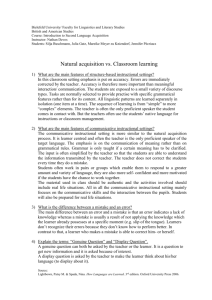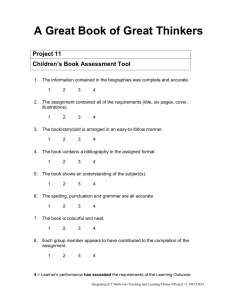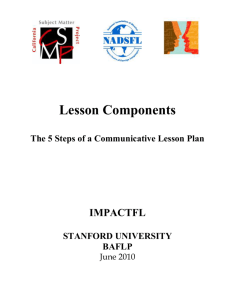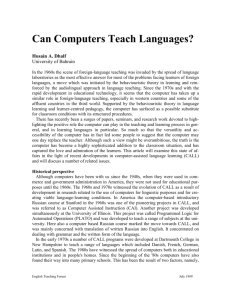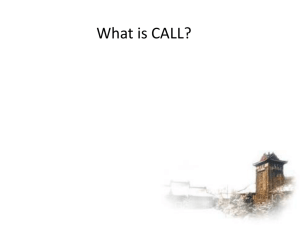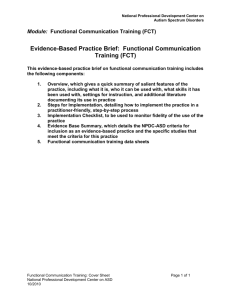communicative methodology 5 principles
advertisement
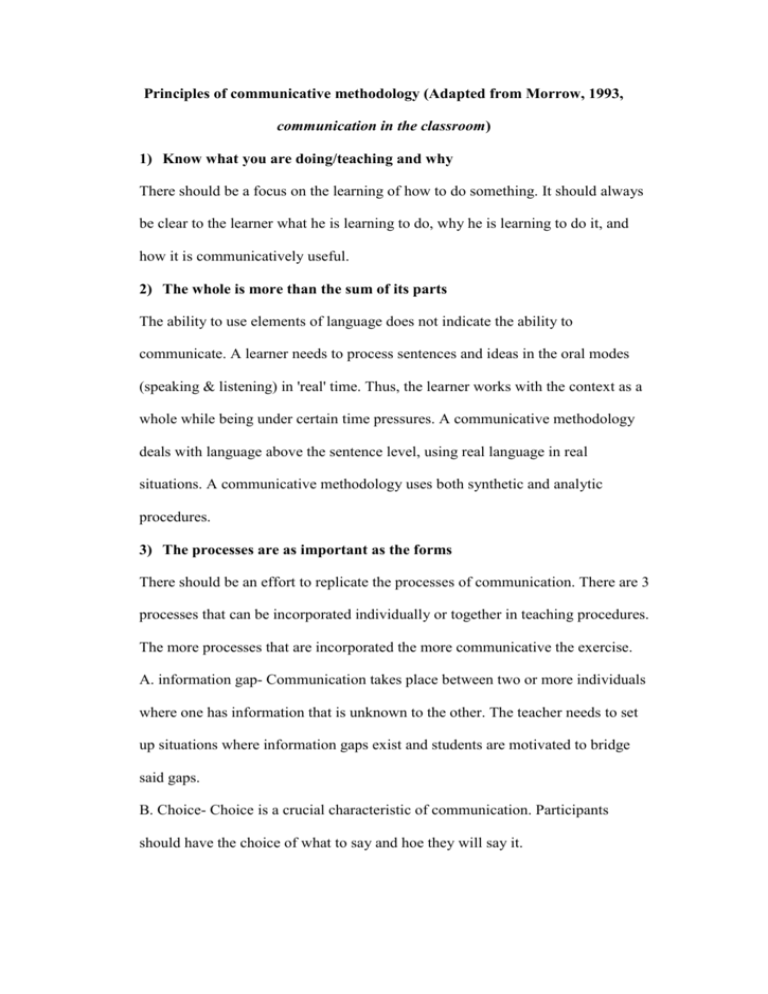
Principles of communicative methodology (Adapted from Morrow, 1993, communication in the classroom) 1) Know what you are doing/teaching and why There should be a focus on the learning of how to do something. It should always be clear to the learner what he is learning to do, why he is learning to do it, and how it is communicatively useful. 2) The whole is more than the sum of its parts The ability to use elements of language does not indicate the ability to communicate. A learner needs to process sentences and ideas in the oral modes (speaking & listening) in 'real' time. Thus, the learner works with the context as a whole while being under certain time pressures. A communicative methodology deals with language above the sentence level, using real language in real situations. A communicative methodology uses both synthetic and analytic procedures. 3) The processes are as important as the forms There should be an effort to replicate the processes of communication. There are 3 processes that can be incorporated individually or together in teaching procedures. The more processes that are incorporated the more communicative the exercise. A. information gap- Communication takes place between two or more individuals where one has information that is unknown to the other. The teacher needs to set up situations where information gaps exist and students are motivated to bridge said gaps. B. Choice- Choice is a crucial characteristic of communication. Participants should have the choice of what to say and hoe they will say it. C. Feedback- When communication takes place the speakers have a specific aim. Thus, a classroom task should have an aim that will allow the participants to receive some sort of feedback. 4) To learn it, do it What happens in the classroom must involve the learner and be judged by its effects on him/her. Learning, to a large extent, is the learner's responsibility. The teacher's responsibility is providing a framework which is conductive to learning. Only by practicing communicative activities can we learn to communicate. A communicative method should encompass stages of presentation, practice and production. 5) Mistakes are not always mistakes There are two possible causes for a learner making a mistake: A. The teacher may believe that mistakes are not important as the learner is getting his/her message across. However, seemingly 'trivial' mistakes and grammar pronunciation can in fact impede communication. B. The learner has been forced to try something that he has not been prepared for, in which case the learner is actually not making a mistake.


